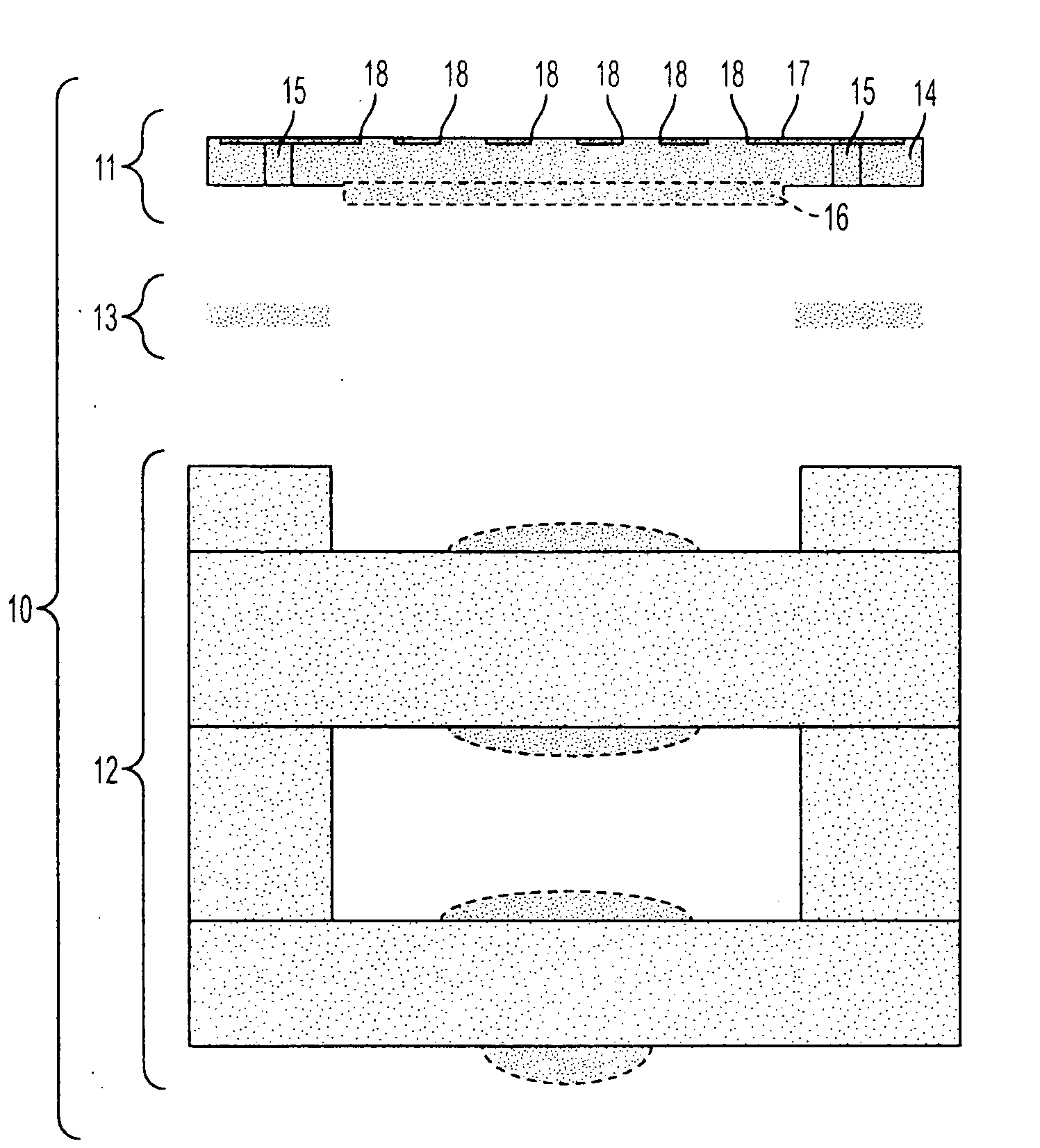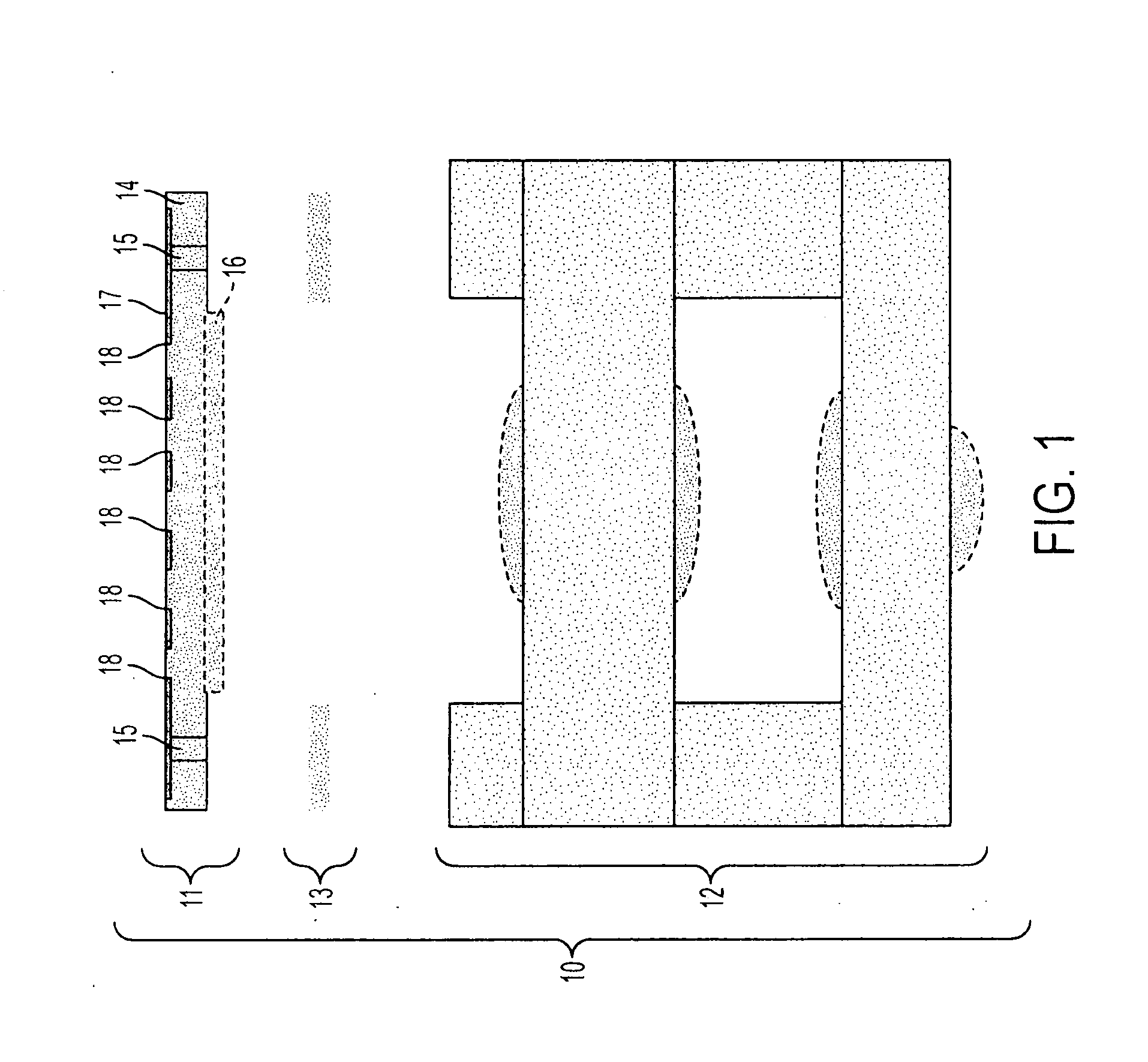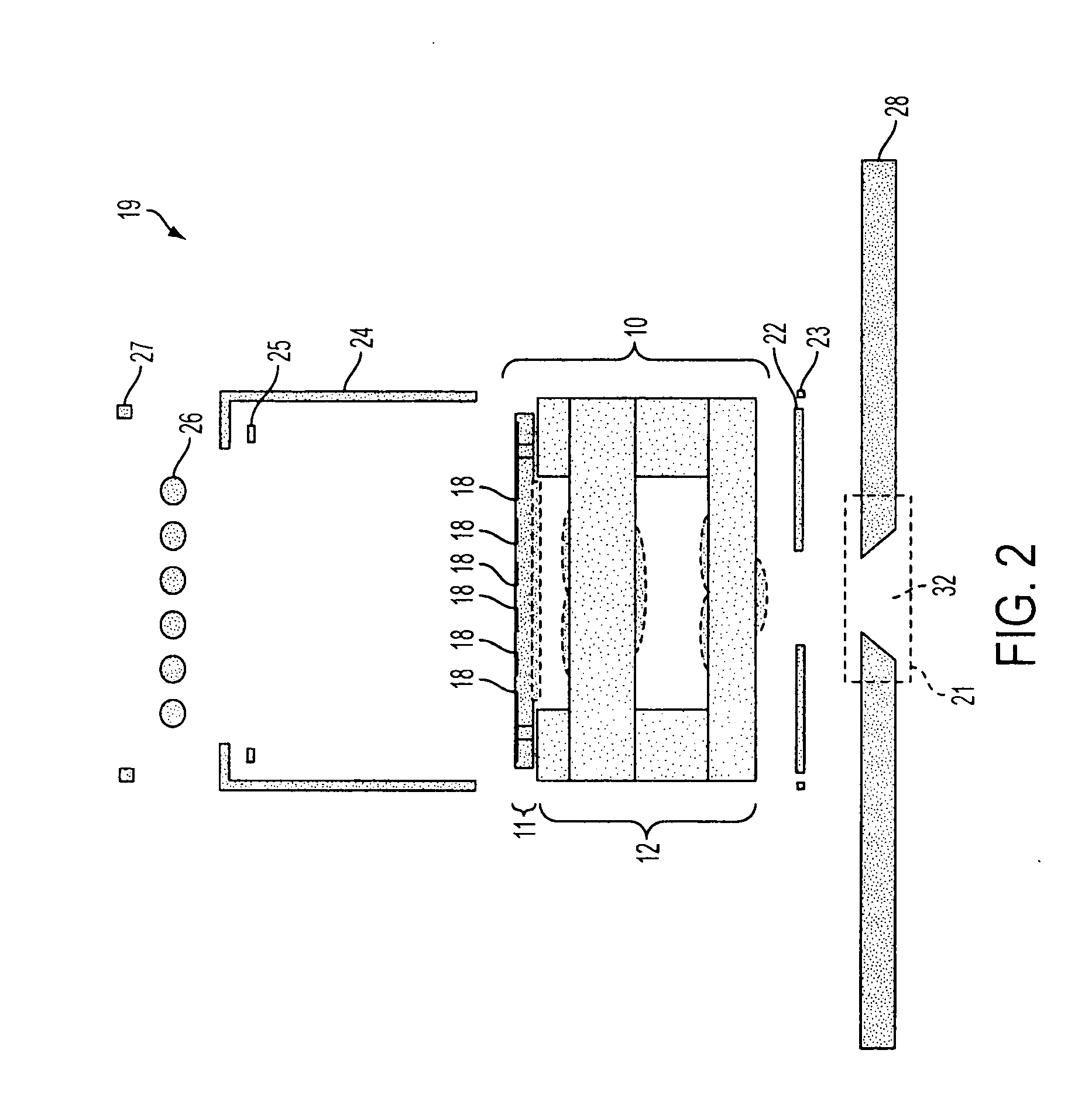Imager wafer level module and method of fabrication and use
a technology of imager wafers and modules, applied in the field of digital imaging, can solve problems such as production costs
- Summary
- Abstract
- Description
- Claims
- Application Information
AI Technical Summary
Problems solved by technology
Method used
Image
Examples
first embodiment
[0033]Once a plurality of imager wafer level modules 19 have been assembled on a molded plastic interposer 28, the plurality of imager wafer level modules 19 can be separated into individual imager wafer level modules 19, or groups of imager wafer level modules 19 as required for a specific application. This process of separation is known as singulation. FIG. 5 is an overhead view of a representative molded plastic interposer 28, with representative saw streets 33, which can be used by a saw to singulate individual imager wafer level modules 19 from a plurality of wafer level modules 19. For example, and not intended to be limiting, in FIG. 5 three module assemblies could be placed over the three apertures 32. As presented previously, these three module assemblies 10 could be assembled by either of two methods. In a first embodiment, module assemblies 10 could be assembled as individual module assemblies 10 and placed individually over their respective apertures 32 such that light w...
second embodiment
[0034]FIG. 3 is a cross-sectional expanded view of the components of a second embodiment imager wafer level module 19′ with a plastic laminate interposer 29. Elements in FIG. 3 referring to like elements in FIGS. 1-2A have the same reference numerals. In the illustrated embodiment, a light guide 31 may also be included. Whether or not an interposer light guide 21 is present with the required aperture 32, the imager wafer level module 19′ may also have light guide 31. This light guide 31, similar to the interposer light guide 21, is used to discriminate between light that should pass, and light that should not pass to the imager 16 (FIG. 1) of the module assembly 10.
[0035]FIG. 3A is a cross-sectional view of an assembled imager wafer level module 19′ with the plastic laminate interposer 29. The components within FIG. 3A are arranged identical to those found in FIG. 2A, with the addition of optional light guide 31 attached to the plastic laminate interposer 29.
[0036]Referring to FIGS....
PUM
 Login to View More
Login to View More Abstract
Description
Claims
Application Information
 Login to View More
Login to View More - R&D
- Intellectual Property
- Life Sciences
- Materials
- Tech Scout
- Unparalleled Data Quality
- Higher Quality Content
- 60% Fewer Hallucinations
Browse by: Latest US Patents, China's latest patents, Technical Efficacy Thesaurus, Application Domain, Technology Topic, Popular Technical Reports.
© 2025 PatSnap. All rights reserved.Legal|Privacy policy|Modern Slavery Act Transparency Statement|Sitemap|About US| Contact US: help@patsnap.com



